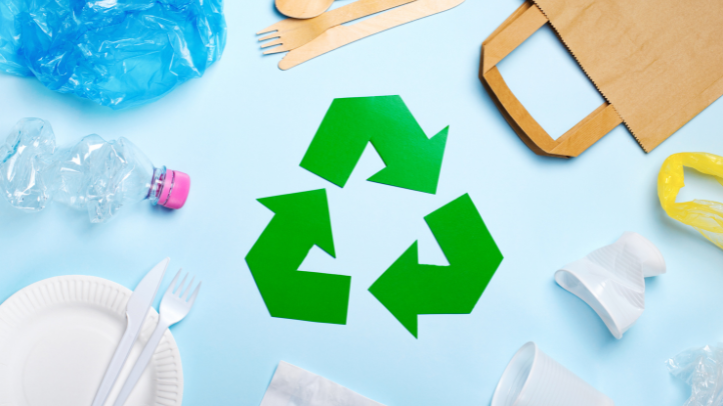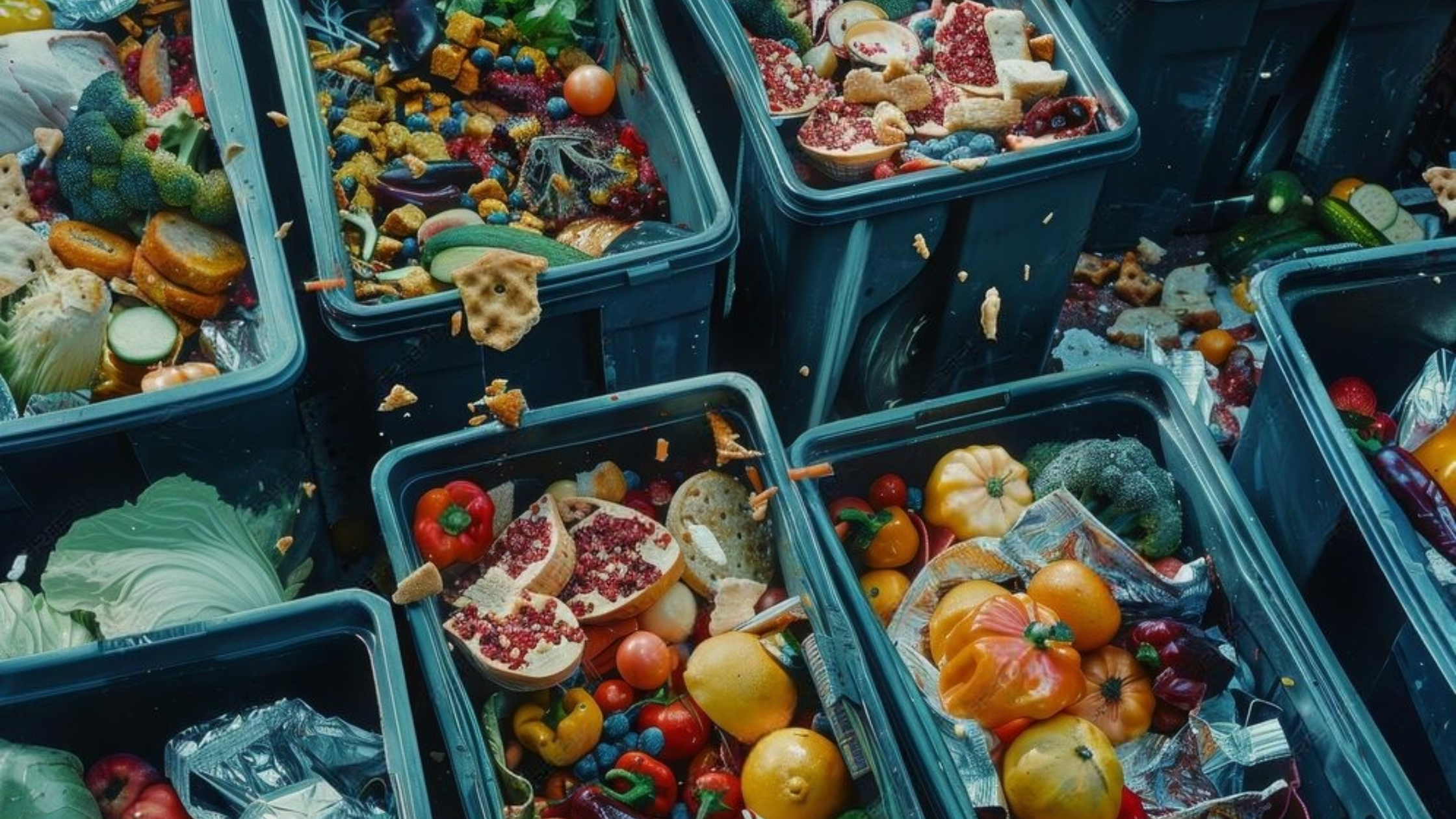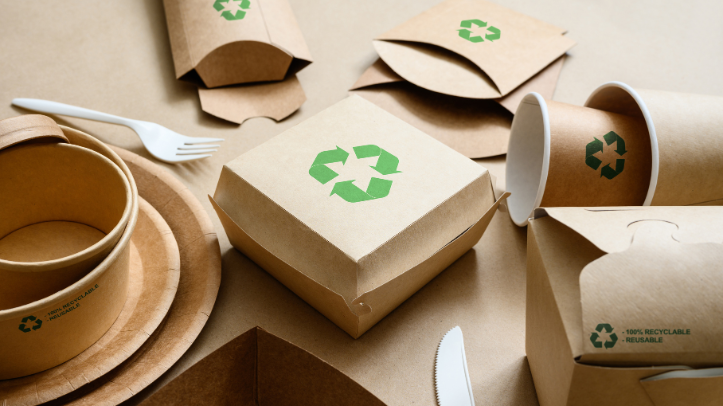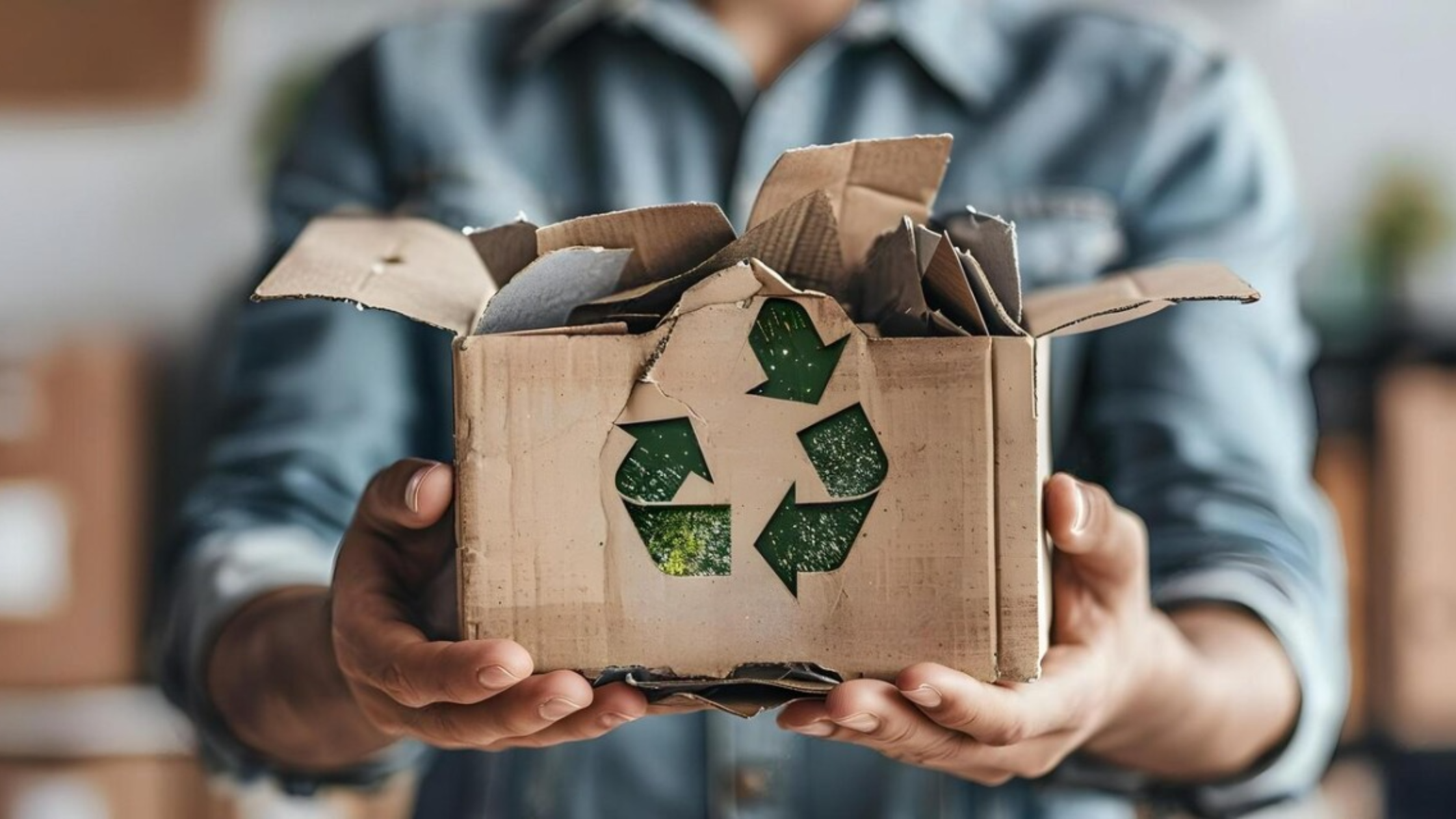Food waste isn’t just a household issue—it’s a global one. In fact, according to the FAO, one-third of the food produced worldwide gets lost or wasted every year. Can restaurants play a part in addressing this massive 1.3 billion-ton problem?
Just like in our homes, restaurants also generate food waste—things like food leftovers, napkins, and plastic. Without a smart approach to recyclable materials, it can cause problems for both the environment and their business.
With 30% of food goes straight to the bin, the National Restaurant Association encourages restaurants to reduce food waste. They’re pushing for better practices – from recycling to composting – to help restaurants reduce waste.
They’re on a quest for SDG Target 12.3, aiming to cut food waste in half by 2030. By trimming waste, restaurant owner can save food, help the hungry, and protect the planet at the same time with those sustainable practices.
What is Restaurant Waste Management and Why is it Important?

Restaurant waste management is all about managing the waste that comes from running a restaurant. From the forgotten salad in the back of the fridge to those half-eaten sandwiches, waste is everywhere, but good waste management keeps things tidy.
It’s like putting your trash on a budget, composting what you can, recycling the rest, and dumping only what’s necessary. With effective restaurant waste collection, you can minimize mess, more success- Good management is all about reducing that waste.
Why should you care? Because waste doesn’t just stink up the kitchen – it costs money, a landfill filler, and a major eco-fail. Tame it, and you’re saving money, making customers happy, and earning bragging rights for being green.
Always remember every uneaten slice of pizza or any other food waste that ends up in the bin is money lost and an environmental problem created. Managing waste means slashing costs, cutting the clutter, and look like a hero to your eco-conscious customers.
Different types of Restaurant Food Waste

Food waste is a significant issue in the restaurant industry, ruining both your profit and the planet. The waste can be classified into three main categories:
Pre-consumer waste
Pre-consumer waste is generated before the food ever reaches the dining table. This includes food spoilage, kitchen errors, and overproduction. Mismanagement of inventory, such as letting perishable items spoil, and cooking more than what’s needed are common contributors.
With strategies like better forecasting of customer demand, precise portion control, and smart inventory practices, you can minimize food waste like a pro in the food service sector.
Post-consumer waste
Post-consumer waste disposal happens after the food is served, encompassing leftover food or meals sent back. Large portion sizes are a frequent culprit. Encouraging smaller portion options or offering doggy bags can help mitigate this waste.
Moreover, understanding customer preferences and adjusting the menu accordingly can reduce the amount of uneaten food.
Non-food waste
Restaurants generate more than just food waste—think single-use plastic straws, paper, glass and utensils. These items may not belong in the food pile, but they sure clutter up waste management. Shifting to sustainable packaging or introducing reusable options can help reduce non-food waste.
Ways to prevent food waste in restaurants
Educating staff
Education is key to track food waste in restaurants. Training staff fosters a sustainable culture.
Start with onboarding sessions on food waste’s environmental impact and hold regular workshops. Encourage waste tracking and creative repurposing ideas from staff. Rewarding their food safety initiatives boosts motivation. Educating your team not only trims the trash but also boosts your restaurant’s eco-friendly image and cuts costs like a pro
Biodegradable packaging

Biodegradable packaging is a vital step toward reducing food waste and keeping those potent greenhouse gases at bay. Unlike plastic, which takes ages to decompose, eco-friendly materials break down in no time, aided by microorganisms such as bacteria, seaweed, fungi, and algae.
The leading biodegradable packaging options include bio-based polymers, cardboard, Seaweed, and paper. So, if you want to keep your inventory levels in check with eco-friendly consumer preferences, it’s time to join the green revolution.
Food donation to charity
Restaurants can significantly reduce waste by composting food scraps, preventing methane production in landfills. Establishing compost bins and training staff on compostable items like fruit scraps can streamline this process.
Partnering with compost services or local farmers for nutrient reuse enhances sustainability. Highlighting composting in marketing can draw eco-friendly customers, enriching their dining experience.
Implements waste audits
Conducting a food waste audit assess waste types and amounts, identifying patterns and areas for improvement. Insights gained can help adjust menus, manage portions, and refine ordering to match demand. Involving staff promotes accountability and encourages them to offer solutions.
Setting waste reduction goals and regularly reviewing progress ensures continuous improvement, save money and cut down on greenhouse gas emissions.
Compost food waste
Restaurants can cut waste by composting non edible food scraps like vegetable peels, eggshells, loose-leaf tea & paper tea bags and coffee grounds, keeping organic material out of landfills, improving soil health and lowering methane emissions.
Set up a few bins, school the staff on the how-to, and team up with local compost pals. Composting facilities can nourish restaurant gardens or be donated to local farms.
Highlighting these efforts can appeal to environmentally conscious customers and boost loyalty, while reducing the restaurant’s environmental footprint and supporting a sustainable food system.
Reduce packaging waste
When it comes to menu planning and extra food, let’s cut down on packaging waste. Use recyclable materials to give those cardboard boxes a second life—turn them into storage or compost. Go minimal with your packaging design—less is more, right? Source your packaging from sustainable forests and get shredding.
Simple policies like “no straws” or straws upon request help minimize plastic waste in a restaurant waste collection. Training staff to prioritize waste reduction and engaging customers in sustainability efforts create a culture of responsibility. These initiatives position restaurants as eco-conscious leaders, drawing in customers who appreciate environmentally friendly practices.
Monitor Portion Sizes
By serving the right portions that match customer preferences, restaurants can cut down on uneaten food. Using standardized measuring tools and training staff to follow portion guidelines ensures consistency. Reviewing sales data helps identify popular items and adjust portions.
Offering options like half-sized plates or sharing platters caters to different appetites, reducing waste. Clear communication with customers about portion sizes helps manage expectations.
Optimize menu planning

Reducing food waste in restaurants starts with smart menu planning. Incorporating seasonal ingredients minimizes spoilage while keeping dishes fresh and exciting. Cross-utilizing ingredients in multiple dishes helps ensure nothing goes to waste.
Regularly rotating the menu and analyzing sales data keeps it relevant and efficient, removing underperforming items. Offering daily specials can use up excess ingredients. Involving the kitchen team in planning ensures the menu is both practical and feasible.
Improve Inventory Management
Tracking stock, expiration dates, and usage allows for better purchasing decisions. Regular checks prevent overstock by identifying slow-moving items.
The “first in, first out” (FIFO) method minimizes spoilage by using older items first. Technology, such as inventory software, automates tracking and offers real-time insights. Training staff in proper inventory techniques and promoting communication between kitchen and management ensures efficient stock control.
How to Create a Restaurant Waste Management Plan?
1. Access Current Waste
Assessing your restaurant’s current waste levels is the first step in creating an effective waste management plan. This involves identifying and categorizing the types of waste generated and the quantity of each type. Breaking down waste helps to pinpoint whether certain menu items are part of a significant problem, allowing for targeted improvements.
Is your kitchen overflowing with so much food, improper food storage? The first step in your waste-busting adventure is to assess what you’re tossing out. By identifying and categorizing your waste, you’ll discover where the real trouble lies and how to sprinkle in some improvement.
- Categorize Waste: Waste should be grouped into categories such as food waste, recyclables (like paper, plastic, and glass), packaging, and non-recyclable items (like certain plastics or hazardous materials).
- Track Volume: Measure the amount of each type of waste produced daily or weekly. This gives a clear picture of which areas need more focus.
- Analyze Sources: Determine the sources of waste. For example, is most of the food waste from preparation, spoiled inventory, or uneaten customer meals? This data helps target specific areas for reduction.
- Identify Opportunities: Identify areas where your kitchen staff can reduce waste by recycling, composting, or donating extra food items, while also choosing sustainable packaging options to cut down on takeout containers usage.
2. Set Waste Reduction Goals
Once waste categories and quantities are clear, the next step is to set measurable goals for waste reduction. These goals should align with both the operational capacity of the restaurant and broader environmental objectives.
- Define Specific Targets: Create specific and achievable targets, like slashing food waste by 20% and crank up recycling by 50% in just six months.
- Align with Sustainability: Ensure that the goals support broader sustainability efforts, such as cutting down landfill waste or turning down that pesky carbon footprint.
- Involve the Team: Engage your staff in setting these goals. Employees are often the ones directly handling waste, so their input is valuable for realistic goal setting.
- Timeline for Achievement: Assign a clear timeline for each goal, whether short-term (within three months) or long-term (over a year). Timelines provide motivation and allow for structured progress reviews.

3. Implement Waste Reduction Strategies
After goals are set, develop actionable strategies to meet them. This involves adjusting daily operations and introducing processes to reduce waste across all categories.
- Food Waste Reduction: Control the portions, manage your inventory management system like a pro, and turn leftover bits in creative ways (e.g., making stocks or garnishes).
- Recycling Programs: Introduce a comprehensive recycling program going with bins at the ready and a team who knows exactly what belongs where.
- Sustainable Sourcing: Choose suppliers who use minimal or sustainable packaging. Consider shifting to reusable or biodegradable packaging materials where possible.
- Composting: This method converts extra food and organic matter into valuable soil for gardening. Over the years, composting has become the eco-friendly way to handle extra food. This transformation could help reduce emissions by 2.1 billion tonnes by 2050.
4. Monitor, Review, and Adjust
The final step in your waste management plan is to monitor the effectiveness of your strategies. Continuously reviewing waste data ensures that the goals are being met, and it provides insight into where further adjustments may be needed.
- Track Progress: Regularly track waste metrics and compare them to your original goals. This helps determine if the strategies are effective.
- Employee Feedback: Engage your staff in the process. Their feedback can uncover practical challenges and suggest solutions for better waste management practices.
- Adjust Strategies: Based on your findings, make necessary adjustments. For instance, if food waste hasn’t decreased as planned, reassess portion sizes or inventory management.
- Celebrate Success: When goals are met, celebrate those achievements. Recognizing success not only motivates your team but also reinforces a culture of sustainability in your restaurant.
Strategies to Reduce and Handle Waste in Restaurants
- Offer flexible menu options: Allow customers to customize their orders during menu planning, offering portion size choices or ingredient swaps, which can reduce a significant amount of food loss by preventing excess from being prepared and left uneaten.
- Regular inventory audits: Frequently check stock to ensure ingredients are fresh and avoid over-purchasing. This helps identify slow-moving items and reduces the likelihood of spoilage.
- Recycle: Set up recycling stations for paper, plastic, and glass in the kitchen and dining areas. Recycling materials like packaging and bottles helps minimize the environmental impact.
- Offer takeaway containers: Provide eco-friendly containers so guests can take leftovers home. This reduces food waste and encourages customers to enjoy their meal later.
- Menu planning based on demand: Analyze sales trends to design a menu that matches customer preferences and demand. This avoids over-preparation of unpopular dishes, minimizing waste.
- Use technology: Implement restaurant management software for managing inventory and forecast demand. This helps optimize stock levels and reduce wastage.
- Go paperless: Use digital menus, e-receipts, and online ordering systems to cut down on paper waste. Going paperless not only reduces waste but also streamlines operations.
- Adopt FIFO Method: Follow the First-In-First-Out system to ensure older ingredients are used before newer ones. This helps prevent spoilage and reduces food waste.
- Avoid overstocking things: Purchase ingredients based on actual consumption and forecasted demand. Avoid bulk buying unless necessary, to keep inventory fresh and minimize waste from expired items.
How KNOW App Can Streamline Restaurant Waste Management Efforts?
When it comes to waste management in a restaurant, a little planning can go a long way.
Getting your crew in on the solid waste management strategy is essential for keeping food costs low and profits high. Now you know the ins and outs of setting up a stellar food waste management plan for your restaurant. From keeping food costs down to boosting your eco-cred, there’s so much to gain when you take waste seriously. But here’s the deal: it’s not just about the “what,” it’s also about the “how.”

That’s where The KNOW App comes in, your go-to solution for managing waste efficiently. With features for task management, scheduling, and compliance tracking, it simplifies your waste operations. No more missed audits, compliance worries, or kitchen disputes over trash duties, everything is organized with a tap.
- Real-time Reporting and Communication: Using the app, restaurant teams can communicate about waste issues in real time.
For instance, if a bin is full or there’s a need for additional recycling efforts, staff can quickly report it through the app. This immediate communication helps ensure that waste management issues are addressed promptly, preventing overflow and maintaining a clean environment.
- Scheduling: With the scheduling feature, restaurant managers can lock in a waste management routine that runs like clockwork—regular trash pickups, sorting duties, and more.
The app can send alerts to staff members for scheduled waste pickups or composting days, helping to maintain organization and reduce overflow of waste bins.
- Real-Time Stock Alerts: The KNOW app helps restaurants efficiently manage food waste by automating their processes with digital forms and checklists. It tracks inventory in real time, logs waste, and identifies patterns to reduce spoilage.
With automated alerts for soon-to-expire stock and customizable reports, restaurant managers can optimize their purchases and streamline their operations.
- Employee Training and Engagement: The app includes features for training employees on best practices for waste reduction and proper waste management protocols. Engaging staff in waste reduction initiatives not only educates them about their impact on the environment but also fosters a culture of sustainability.
For instance, the app could offer quizzes or challenges related to waste management, incentivizing employees to participate actively.
By integrating tools like the KNOW App into your waste products management routine, you can unlock a new level of efficiency. With 4 simple steps, you’ll digitize all your checklists, audits, and staff rosters—cutting food waste and saving hours.
Remember, in restaurant food waste management, knowledge is key, but action makes it count.






![The 8 Best Restaurant inventory management software [2025] Inventory management software](https://www.getknowapp.com/blog/wp-content/uploads/2024/09/Inventory-management-software-360x240.png)




![The 10 Best Restaurant Scheduling Software and Apps [2025] restaurant scheduling software](https://www.getknowapp.com/blog/wp-content/uploads/2024/09/restaurant-scheduling-software-360x240.png)


